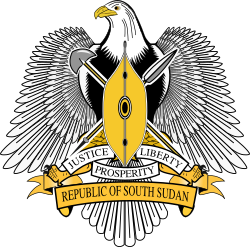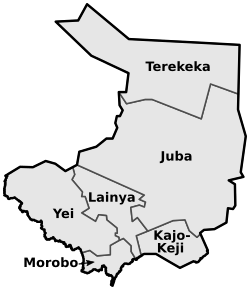 |
|---|
| Constitution |
The 10 states and 3 administrative areas of South Sudan are divided into 79 counties. [1] [2]
 |
|---|
| Constitution |
The 10 states and 3 administrative areas of South Sudan are divided into 79 counties. [1] [2]
Before the independence of South Sudan from Sudan, the Counties were known as Districts. Upon Independence in 2011, the 10 states of South Sudan were divided into 86 counties. More counties were established during the South Sudanese Civil War, when the country increased to 32 states, and the number of counties exceeded 100. However, with the return to 10 states and 3 administrative areas in 2020, South Sudan reverted to 86 counties. [2]


A









